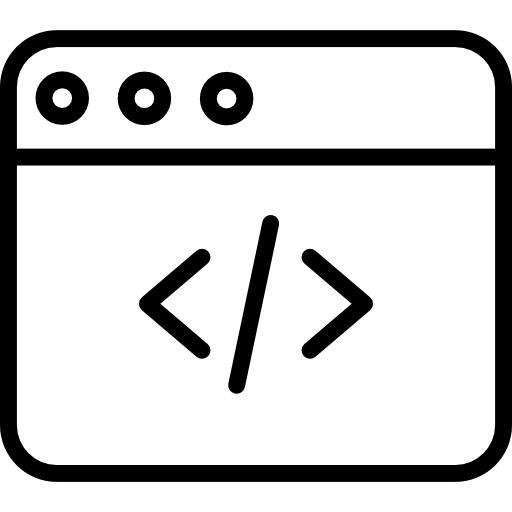
Prerequisite: Methods of STEM Education
Target Grade(s): K-12
(Master’s degree students only)
In Action Research in the STEM Classroom, you will conduct research in your educational setting to examine some aspect of STEM teaching and learning. With the support of your instructors, you will design and enact action research by reviewing background literature, formulating research questions, designing a study, collecting data, completing a thorough analysis, and reporting findings. You may be encouraged to prepare to present your research at an appropriate education conference and/or to submit work to research publications. This course builds on the work done in Capstone I (prerequisite course required for participation in Action Research in the STEM Classroom) of your Master’s degree program.

Target Grade(s): K-12
The Advanced Coding, Robotics, and 1:1 Devices (ACRD) extends students’ knowledge of programming and robotics that began in part one of this course. The ACRD class begins with a foundational understanding of the types of programming and integrated development environments to implement the various platforms with students in the hybrid classroom. ACRD students will gain fundamental understanding of data and methods of visualization which is crucial to the success at every level of programming and robotics. The programming platforms selected for this course will incorporate data as practiced in workplace settings. The platforms support mobile application development, data entry & manufacturing, augmented and virtual reality, 3D printing, and virtual robotics. The sessions present each topic within three paradigms: the mindset, the beginner’s sandbox, and the intermediate immersion (referred to as Level 1,2, and 3 respectively in the course artifacts). This layered prepares teachers to guide students, including our youngest scholars, on a journey to establish computational thinking on levels aligned with readiness. ACRD students will collaborate about lesson planning ideas through online Flipgrid, office hours, and a culminating hackathon to showcase projects.

Target Grade(s): PK-12
Harness your students' enthusiasm for space and astronomy by using astronomical images to enrich your physical, Earth, and life science courses. Measure the speed of an asteroid, learn about erosion on Mars, and see the traces of life that are visible from space. In this course, we explore the many ways in which real data from NASA's space science and astronomy missions can be used to teach math and science content in your classroom, meeting science and math standards in Next Generation Science Standards and Common Core State Standards. Through the use of cutting-edge technology tools, and with a NASA scientist visiting our class, you will not only learn more about the universe, you will learn how to bring the universe into your education context.
Upon completion of this course, educators will be able to:
- Demonstrate effective implementation of using NASA astronomy data with students when teaching math, physical, earth, or life science.
- Successfully implement (or plan to implement) inquiry and technology-based teaching strategies in the classroom.
- Analyze publicly available data and the appropriate use in classrooms to teach NGSS.
- Describe, compare, and implement a variety of pedagogical strategies, including assessment strategies that will enable students to learn science, technology, engineering and mathematics.
- Identify a variety of resources to meet NGSS performance expectations in STEM education.
- Conduct investigations with data that contextualize understanding through applied practices.

Target Grade(s): 6-12
In many ways, chemistry more than any other science suffers from being misunderstood in everyday society. The word 'chemical' itself elicits negative reactions, and so few understand how chemistry is alive in our everyday actions and the products at our fingertips. In this course, we will explore the many facets by which even the layman can come to appreciate chemistry in the world; be it in the materials that make up your clothes, the technology that created the age of plastics, or the chemicals in your brain that tells you how to feel as you read these words. We will explore a wide array of topics based on 'grocery-store' science, allowing you to get your hands in the chemistry without the need of expensive materials or lab equipment.
This course addresses content and pedagogy most appropriate for teaching students in grades 6-12. However, all educators are welcome.
Upon completion of this course, educators will be able to:
- Demonstrate effective implementation of chemistry topics using cheap, readily available materials.
- Successfully implement (or plan to implement) inquiry and technology-based teaching strategies in the classroom.
- Analyze publicly available data to understand how chemistry is done at the scale capable of being the backbone of our society.
- Describe, compare, and implement a variety of pedagogical strategies that will enable students to bridge chemistry, materials science, and engineering.
- Identify a variety of resources to meet NGSS performance expectations in STEM education.
- Conduct investigations with data that contextualize understanding through applied practices.

Target Grade(s): PK-12
Socioscientific issues are important avenues through which to teach scientific literacy and to create the next generation of critical thinkers and sustainable solution engineers. Anthropogenic climate change is one of the most complex and critical issues the global community faces today. Understanding climate change and the scientific, social, and economic ramifications is crucial for science pedagogues. This course examines the ideas of socioscientific issues and critical thinking in science education and how they can be taught through NGSS-aligned global change pedagogies that highlight climate and energy literacy. Pedagogues will learn to utilize authentic data resources that elucidate the story of our changing climate and think critically about how to implement data into their teaching. The philosophical, ethical, and scientific basis of these problems and their solutions will be discussed.
Upon completion of this course, educators will be able to:
- Develop climate literacy to encourage an intrinsic understanding of anthropogenic climate change issues and solutions.
- Plan and teach with data, simulations and models to increase opportunities for students to learn through inquiry and build data literacy.
- Apply a socioscientific issue (SSI) approach to facilitate student learning while valuing students' ideas, attitudes and pre-held beliefs, and present strategies to successfully negotiate these topics.
- Recognize authentic data connections for integrating climate science into grade level appropriate lessons.

Target Grade(s): PK-12
Educators learn to apply coding to teach STEM content, explore opportunities to use robotics, and learn cutting-edge implementation of One-to-One Devices (1:1) in K-12 classrooms. Participants learn about and explore best practices in the newest learning pedagogies and technologies. Whether you are a beginner with integrating coding and robotics in your classroom or you have extensive experience with the tools, you will expand your knowledge in this course. The course is differentiated for success at all grade levels. Instructors model applications and use of resources for elementary, middle, and high school students. Participants will interact with no-fee computer programming, robotics opportunities, and the latest uses of devices. All participants have the opportunity to work with innovative technologies and interact with talented educators, practitioners and special guests who are already making a difference in K-12 classrooms.
Upon completion of this course, educators will be able to:
- Implement computer programming to enhance pedagogical practice.
- Integrate computational thinking and problem solving strategies in lesson planning.
- Utilize robotics to fully integrate Science, Technology, Engineering, and Math concepts.
- Augment best practices by using one to one devices.
- Utilize technology as a pedagogical tool to enhance student understanding.
- Incorporate NASA data and curricular resources into classroom instruction.

Target Grade(s): PK-12
Classrooms comprise individual learners, each bringing their own culture and experiences to the learning environment. The value and strength of diversity is widely recognized as a cornerstone of quality teaching. This course introduces teachers to the curriculum and pedagogical issues relevant to race, language, gender, and socio-economic differences. Participants apply content and pedagogy involving science and mathematics contexts for effective learning. STEM activities will integrate meaningful, engaging practices for teaching diverse learners. The course is differentiated for elementary and secondary school educators to provide relevant connections, to be directly applied, in each participant’s classroom. Student ideas, experiences and cultural assets are key to unlocking student connections to phenomena. Learn to value diversity and use cultural referents through pedagogical choices in your practice.
Upon completion of this course, educators will be able to:
- Evaluate their own identities, biases and position in the curricula and schooling experience.
- Design a multicultural STEM mini unit and equitable assessment.
- Review and discuss literature related to relevant teaching and learning practices.
- Collect and analyze data pertaining to student diversity.
- Relate findings to national priorities for STEM education.

Target Grade(s): PK-12
This course will take participants through a journey about space exploration and specific NASA missions that examine components of earth. Participants will learn science content grounded in Earth's Lithosphere, Hydrosphere, Atmosphere, and Biosphere. By learning to use authentic data from NASA and other sources participants will experience an exploratory approach to learning about the Earth, and then bring these experiences to their own classrooms. Teachers will utilize several web-based tools and real-time data along with the three-dimensional learning in the Next Generation Science Standards to create lessons that can be used directly in the classroom.
Upon completion of this course, educators will be able to:
- Analyze publicly available data and the appropriate use in classrooms to teach NGSS.
- Describe, compare, and implement a variety of pedagogical strategies, including assessment strategies that will enable students to learn science, technology, engineering and mathematics.
- Identify a variety of resources to meet NGSS performance expectations in STEM education.
- Conduct investigations with data that contextualize understanding through applied practices.
- Develop integrated STEM lessons based on reform-based recommendations (i.e., NGSS and CCSS).

Target Grade(s): 2-12
Explore the ocean using innovative instructional tools and activities. Participants will learn the importance of the ocean to our home planet, as they analyze and utilize the Ocean Literacy Essential Principles and Fundamental Concepts. Using inquiry-based modules developed on a theme of ocean exploration, participants will learn how to ultimately make their students more ocean-literate. Guest presentations by ocean researchers show how scientists and educators are working together to bring the ocean into the classroom. You will receive access to a comprehensive web-based resource center on ocean instruction that features lesson plans, activities for students, demonstrations, interactive games and modeling tools, and much more!
This course addresses content and pedagogy most appropriate for teaching students in grades 2-12. However, all educators are welcome.
Upon completion of this course, educators will be able to:
- Describe the crucial role of the ocean in the Earth System.
- Cite evidence of the ocean’s influence on humans and humans’ influence on the ocean.
- Examine and critique educational and scientific resources to improve the ocean literacy of students.
- Incorporate the ocean in regular classroom instruction and use it as an engaging context for applying scientific practices.
- Adopt practices such as inquiry and technology-based teaching and learning strategies and successfully implement them in the classroom.

Target Grade(s): 3-12
Participants in this course will track marine animals (e.g., polar bears, sea turtles, sharks, and whales) in real-time, and apply life and Earth science topics to the ocean. Educators will learn to facilitate the study of ecosystems, biodiversity, cell structures, food webs, and conservation, with students through explorations of ocean currents, seafloor features, density and more. Take this class to discover the importance of the ocean to humans, as well as our impacts, both positive and negative, on marine environments. The in-depth use of data, analysis and student centered investigation aligns with 3 dimensional teaching supported by the Next Generation Science Standards. This course leverages the curricular materials developed through the Signals of Spring ACES project.
This course addresses content and pedagogy most appropriate for teaching students in grades 3-12. However, all educators are welcome.
Upon completion of this course, educators will be able to:
- Demonstrate related content knowledge and themes (change over time—short term, seasonal, and geologic time; conservation; ocean processes; photosynthesis and food availability, and the interconnectedness of Earth’s spheres) through activities and presentations.
- Analyze and use Earth data from satellites, ships, and buoys.
- Illustrate the impacts of humans on the ocean and the ocean on humans.
- Facilitate authentic research and analysis of the movements of specific animals by examining pathways with respect to oceanic processes.
- Adopt inquiry and technology-based teaching and learning strategies and successfully implement them in the classroom.

Target Grade(s): PK-12
Educators excel at creating and managing classroom environments that allow students opportunities to make sense of new ideas and deepen their understanding of the world around them. Through facilitating student interactions and carefully implementing meaningful activities to provide all learners opportunities to engage in the learning process, teachers encourage “sense-making” of new ideas, a skill set that is understood as central to the craft of teaching. Sense-making is a social and collaborative process of active engagement with new information, and requires that learners have opportunities to discuss, debate, reason, and reflect so that they can deconstruct and reconstruct their understanding. Participants in the is course will learn specific skills and practices for facilitating student interactions that lead students to make sense of new ideas.
Upon completion of this course, educators will be able to:
- Identify strategies that give all students opportunities for sense-making.
- Think critically about modeling instruction as an equity practice.
- Develop instructional models appropriate for use in teaching STEM content.
- Purposeful select, plan for, and implement practices that support student to student engagement.
- Plan and implement opportunities for critical thinking and reasoning through use of selected tools.
- Engage with colleagues in the course in a respectful and productive learning environment, modeling equity pedagogy.

Target Grade(s): PK-12
This course introduces a wealth of applied mathematics exercises and activities relevant to integrated STEM and applied science activities. Some are in the realm of topics seen in Earth and Space science and physics. Live presenters break down authentic examples and projects, and demonstrate to educators how problems incorporate Common Core State Standards-based mathematics with applications that meet Next Generation Science Standards performance expectations. Educators survey math and science examples and tools as the course promotes the use of applied mathematics in science, or science in mathematics, to meet content goals in the classroom.
Upon completion of this course, educators will be able to:
- Use science problems and integrated-STEM examples which apply mathematics to meet math learning goals. Adopt a curriculum unit or sequence to incorporate applied math learning in a science, mathematics, or other classroom(s).
- Integrate math and science content in authentic contexts to motivate learners.
- Scaffold mathematics content with science concepts for effective instructional materials.

Target Grade(s): K-12
Students can excel with STEM content when teachers implement innovative student-centered classroom practices. In this course, educators learn to apply research-based practices valued in NGSS-based classrooms. Educators gain resources for selecting and integrating authentic data, planning student-centered lessons, making learning culturally and community based, and developing meaningful assessments for STEM activities. In a collaborative environment, participants learn to integrate engineering design into their STEM classroom and appropriately represent the Nature of STEM, recognizing that each discipline is essential to authentic learning opportunities. Teacher educators share many resources and model STEM teaching to engage students in the active process of STEM learning and applying critical thinking skills to real-world scenarios. This foundations course is the basis for the Endeavor STEM program electives where concepts and practices are explored further.
Upon completion of this course, students will be able to:
- Describe, compare, and implement a variety of pedagogical strategies, including assessment strategies that will enable aged students to learn science, technology, engineering and mathematics.
- Understand the Nature of STEM and the value of each component for authentic instruction.
- Identify a variety of resources to meet NGSS performance expectations in STEM education.
- Conduct investigations and use data to contextualize understanding through applied practices.
- Develop integrated STEM lessons based on reform-based recommendations, i.e., NGSS and CCSS

Target Grade(s): 6-12
Gain excellent resources and engaging activities for implementing STEM content in your classroom with important connections to real-world scenarios. Participants learn to solve problems relating to one-dimensional motion; become acquainted with and apply Newton's Laws of Motion and equilibrium of forces; learn about constant acceleration and gravitational acceleration; investigate concepts in aerodynamics; and learn about two-dimensional motion. Participants will use free, simple-to-use, software simulations from NASA Glenn Research Center, which helps to present these concepts for you, and, then, your students, in the context of aeronautics, including airplane design, rocketry, sports, and more. A carefully developed resource page provides access to excellent resources and engaging activities for implementing course content in your classroom with important connections to Next Generation Science Standards and Common Core mathematics.
This course addresses content and pedagogy most appropriate for teaching students in grades 6-12. However, all educators are welcome.
Upon completion of this course, educators will be able to:
- Utilize interactive, online resources to demonstrate an understanding about how to teach physical science concepts.
- Utilize research-based resources, strategies, and assessments from physical science education.
- Demonstrate how to support student understanding through the use of modeling.
- Select, modify, and develop teaching materials (units, lessons, labs, etc.) that use course resources.
- Identify best practices for utilizing web-based and mobile applications.
- Demonstrate an understanding of one and two-dimensional motion, forces, Newton’s laws, fluids, and aerodynamics concepts.

Target Grade(s): 4-9
Gain an introduction to physics in this conceptual course that uses NASA’s space initiatives as the context for content. Learn about gravitation between celestial bodies, how to get a satellite into orbit, what it takes to blast off into space, and more. This course will discuss these and related topics while exploring NASA content related to space and the Hubble Space Telescope and Kepler Missions. Bring cutting-edge examples to your classroom while addressing Next Generation Science Standards performance expectations and Common Core State Standards.
This course addresses content and pedagogy most appropriate for teaching students in grades 4-9. However, all educators are welcome.
Upon completion of this course, educators will be able to:
- Utilize interactive, online resources to demonstrate an understanding about how to teach physical science and astronomy concepts.
- Select, modify, and utilize NASA resources from physical sciences education in the context of NASA missions.
- Apply research-based strategies from STEM, physics, and astronomy education to instructional practice.
- Align resources and strategies to the K-12 Framework for Science Education and the Next Generation Science Standards.
- Identify best practices for utilizing digital applications and resources.
- Demonstrate an understanding of fundamental astronomy, universal gravitation, orbital motion (Sun, Moon, Earth, and other satellites) and its effect of “perceived weightlessness,” and Kepler’s laws.

Target Grade(s): K-12
(3-course certificate students only)
Practicum in STEM Leadership is the required capstone experience for all 3-course certificate candidates. As a participant, you will be supported by instructors and Endeavor colleagues as you share your knowledge of STEM teaching and learning with professionals in your local teaching context, including your school building, district, or region. As a 3-course certificate candidate, you must complete this no-fee capstone experience to finish the program and receive your certificate. This project may be taken simultaneously with a final elective course. Practicum in STEM Leadership is not offered during Summer semesters. You may optionally earn one graduate credit for a fee.

Target Grade(s): K-12
(5-course certificate OR Master’s degree students only; NOT for 3-course certificate students)
STEM Leadership Seminar is a capstone course to be taken at the end of the program. Instructors guide educators to design and implement a short-term STEM professional development event. The goal is to support sharing of content and STEM pedagogy with other professionals in the building, school district, or region. Collaboration and online feedback between instructors and STEM colleagues provide appropriate guidance for educators to achieve outcomes and success. The goal is to support Endeavor educators as developing teacher leaders in STEM Education.

Target Grade(s): PK-12
In this course you will apply art in the context of exciting STEM concepts and learn to integrate art, science, math, technology, and engineering in more meaningful ways in your classroom. At the core of the STEM Education movement is critical thinking, creativity, problem solving, and authentic learning environments that engage diverse students in meaningful ways with content. The many mediums for art and artistic expression are a valuable component of communication and expression. Scientists and researchers at NASA and across the globe use myriad forms of art in their work. This course invites students to take a close look at the incorporation of art in the STEM classroom and provides resources, exemplars, and access to collaborative support for arts integration. STEM, STEAM, STEM-E, STREAM, STEM+C...and all others are welcome.
Upon completion of this course, educators will be able to:
- Describe, compare, and implement a variety of pedagogical strategies, including assessment strategies that will enable students to learn science, technology, engineering, mathematics, and art.
- Understand the connection between the arts and STEM Education.
- Identify a variety of resources to meet NGSS performance expectations and the National Art Core Standards in STEM education.
- Conduct and engineering design challenge and use self-created rubrics to contextualize understanding of assessment practices in STEM Education through applied practices.
- Develop integrated art lessons based on reform-based recommendations (i.e., NGSS and CCSS) and the National Art Core Standards.

Target Grade(s): PK-12
Learn how to use engineering to make your classroom come alive. Bridge and teach math and science concepts through exciting applications in the Engineering Design Process where you and your students design, test, and evaluate models and real-life applications. Activities are hands-on and emphasize the reciprocities between science, technology, engineering, and mathematics in formal design challenges. Educators enrich classroom curriculum with elements of design in science, mathematics, or technology activities, addressing important Next Generation Science Standards' engineering design practices.
Upon completion of this course, educators will be able to:
- Describe the nature, characteristics, and scope of engineering problem solving and design.
- Examine and draw conclusions about the relationship between the study of engineering, technology, mathematics, and science (and other discipline-based knowledge) through classroom activities.
- Demonstrate the ability to solve engineering problems/challenges.
- Evaluate engineering activities and curriculum that lead students to a greater understanding of the scientific and technological world.
- Incorporate the engineering design process and NASA content into regular classroom instruction.
